The Industrial Revolution was a period between the late 18th Century and early 20th Century, which saw rapid growth in mechanisation, industrial production and change in society.
Two stages of Industrial Revolution
- The first stage of the Industrial Revolution (1770-1870) – Centred on steam, water, iron and shift from agriculture.
- The second stage of Industrial Revolution (1870-1914) – New technologies of electricity, development of petrol engine, oil, and greater use of cheap steel.
Key features of the Industrial Revolution
- Population shift – moving from rural agriculture to work in factories in cities.
- Mass production of goods, increased efficiency, reduced average costs and enabled more to be produced.
- The rise of steam power, e.g. steam trains, railways and steam-powered machines.
- Industrial and scientific discoveries enabled a revolution in our understanding of the material world.
- Rapid industrialisation had a cost in terms of pollution and poor working conditions for labour.
Reasons for the Industrial Revolution
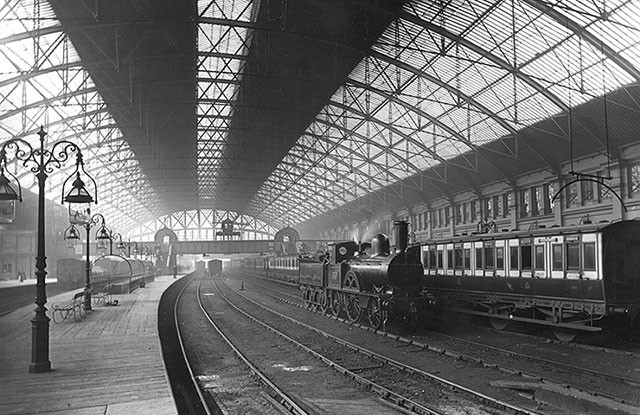
Birmingham New Street station
- New technologies dramatically improved speed of transporting people and goods. The first Intercity railway was built in 1830 between Liverpool and Manchester. The railways enabled more freight to be transported cheaply and quickly.
- In 1700, it took four days to travel from London to Manchester, by 1870, it took four hours.
- Application of steam engines. The development of the steam engine was critical for the Industrial Revolution. It enables steam trains, but also steam-powered pumps and machines, which increased the productivity of labour.
- Agricultural revolution enabled higher food output from fewer farm workers, leading to surplus workers who could go and work in factories. This revolution in agriculture was due to new techniques like crop rotation, selective breeding, economies of scale from bigger farms and better transport.
- Growth in global trade. Helped by Britain’s effective shipping capacity and Empire, which was a source of raw materials.
Important discoveries/inventions in the Industrial Revolution
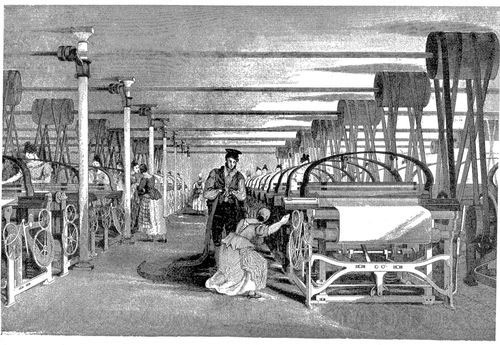
Power loom weaving
- Edmund Cartwright’s power loom (1787) enabled mass production of cloth.
- Steam engine (developed by James Watt 1760s) further transformed the cotton industry and later steam trains.
- Smelting iron. A new method of producing iron, developed by Abraham Darby (1678-1717). This new method used coke rather than charcoal and enabled higher production. Iron was used for building and railways.
- Steam train. Richard Trevithick invented the first working steam train 1806. George Stephenson’s Rocket 1829, important for convincing people of the potential of steam trains.
- Machine tools. Prior to the industrial revolution, metal was fashioned by hand, which was very labour intensive. Machine tools, such as cylinder boring tools and the milling machine, enabled mass production of things like cylinders for steam trains.
- Chemicals. Chemicals, such as Sulphuric acid and sodium carbonate was important in many industrial processes, such as bleaching cloth, and other products, such as soap, and paper.
- Cement. Portland cement was important in new engineering products, such as the Thames tunnel.
- Tarmacked roads. Thomas Telford and John Macadam developed better roads, with firm foundations, drainage and a smooth surface.
- Telegraph Wire – 1837 invented by Samuel Morse
- Bicycle – 1839 –
- See also: Famous inventions
Problems of the Industrial Revolution
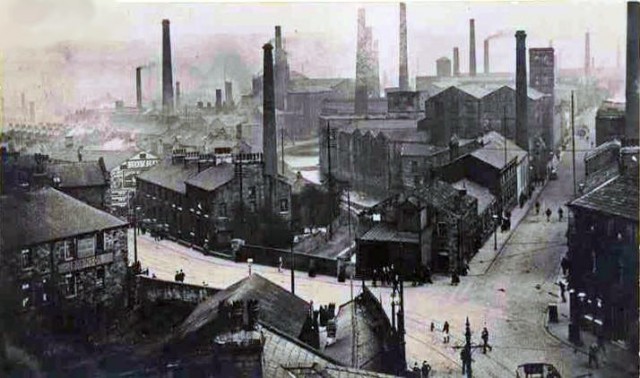
Burnley – shows the extent of pollution around 1900.
- Pollution was a major problem in the industrial revolution, caused by burning coal, high population density and no regulations on factories.
- The West Midlands became known as the ‘Black Country’ because of its landscape of dark foundries, furnaces and smoky atmosphere.
- Average life expectancy in 1837 was in the high 30s(1). But, it was lower for those working in factories.
Children pulled coal tubs in small tunnels.
- Child labour. Many children worked long hours for very low pay. They were also susceptible to maimed limbs, poor health and early death.
- Higher concentration of workers in new mill towns led poor sanitation and outbreaks of infectious diseases, such as cholera.
- The slave trade. In the early part of the Industrial Revolution, some industries, such as cotton were still dependent on the slave trade.
Benefits of the Industrial Revolution
- Although many who worked in factories were poorly paid and suffered bad conditions. Real wages did rise significantly through the Nineteenth Century.
- Agriculture was given poor returns and farm labourers often very badly paid.
- Life expectancy also rose in the Nineteenth Century, as some diseases, such as cholera were brought under control.
- First government regulations. The conditions of the Industrial Revolution encouraged governments to pass laws on child labour and introduce first basic safety legislation.
- Education and health care. The terrible conditions of the industrial revolution sparked moves to provide more education and health care. Local school boards started to offer free education to your children.
- Movement of people. Prior to the industrial revolution, people rarely moved from the area they were born. The industrial revolution enabled people to travel further afield.
- Wealth led to philanthropy. Some of the great industrialists who amassed a fortune from the industrial revolution (e.g. Andrew Carnegie, J.Rockefeller, J.P.Morgan), turned philanthropist and gave their wealth to charitable projects, such as libraries and health care.
Political movements of the Industrial Revolution
Marxism. At the height of the industrial revolution, Karl Marx wrote Das Capital and The Communist Manifesto. Marx argued capitalism was inherently unfair and he expected the workers (the Proletariat) to overthrow Capitalism.
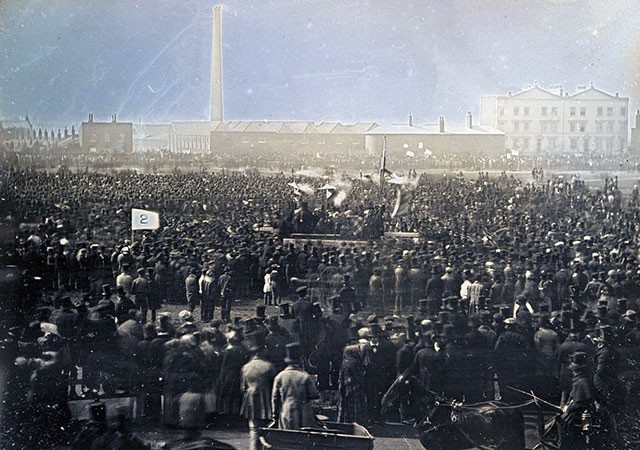
Chartist meeting 1848, in London. The height of the Chartist campaign
Chartism. A working-class movement aimed at gaining political and voting rights for working-class men
Trade unions. The large workforces and unequal incomes helped create the trade union movement in all industrial countries. Trade unions campaigned for higher wages and better working conditions.
Suffragette movement. Not directly related to the industrial revolution, but the late Nineteenth Century saw the emergence of women’s groups seeking to gain political rights for women.
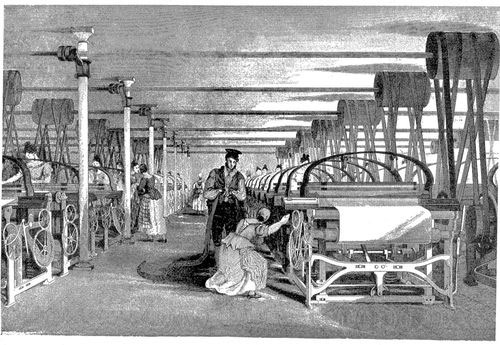
Power loom weaving often seen as a threat by “Luddites”
Luddite Movement. Not a political movement, but more a direct action movement (primarily 1811-1819). This involved self-employed craft workers smashing machines, such as weaving looms and spinning frames, which they felt threatened their own job.
Nationalist movements. The industrial revolution helped create stronger national movements. For example, the industrial revolution was a factor in changing Italian society and encouraging the growth of a united Italy, e.g. G.Mazzini)
Citation: Pettinger, Tejvan. “Facts about the Industrial Revolution” Oxford, www.biographyonline.net, 15th Feb. 2016. Last updated 10 Feb 2018.
Industrial Revolutionaries: The Making of the Modern World 1776-1914
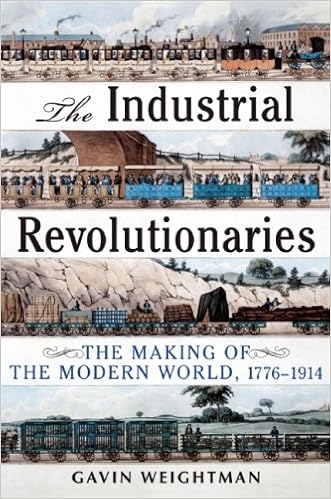 Industrial Revolutionaries: The Making of the Modern World 1776-1914 at Amazon
Industrial Revolutionaries: The Making of the Modern World 1776-1914 at Amazon
Related pages
People of the Industrial Revolution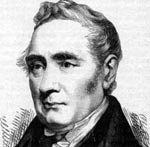
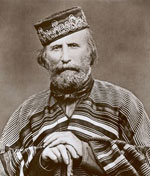
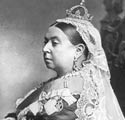
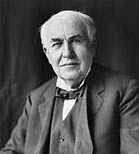
Also:
- Industrial revolution at BBC
- The Gilded Age (American 1870-1900)

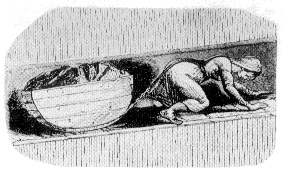
2 Comments
Can anyone tell me where I can get info about the effects the Industrial Revolution had on home brewers and breweries in general in Ireland.
this is the industrial revolution